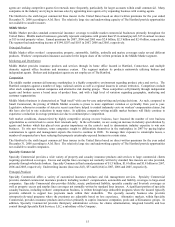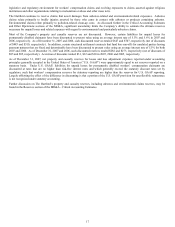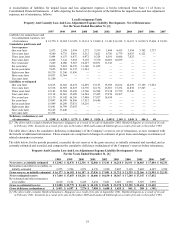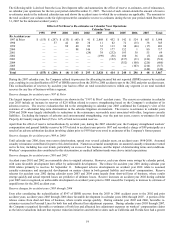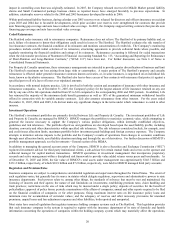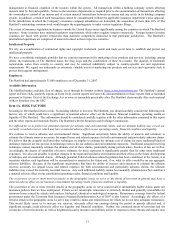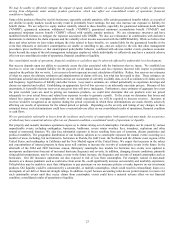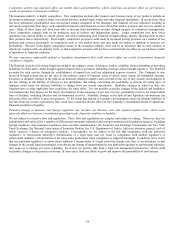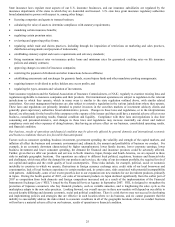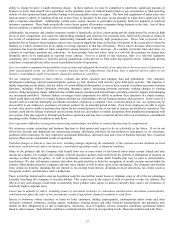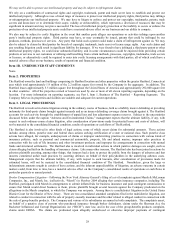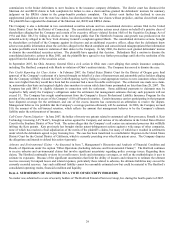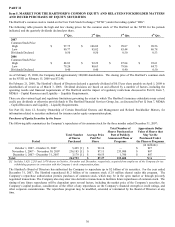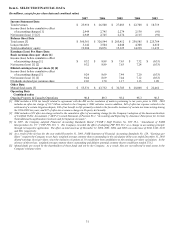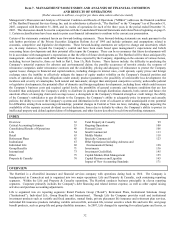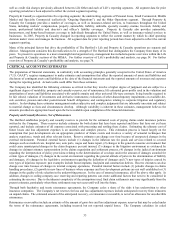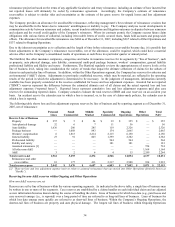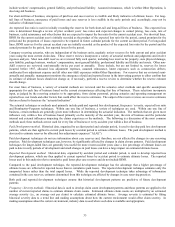The Hartford 2007 Annual Report Download - page 25
Download and view the complete annual report
Please find page 25 of the 2007 The Hartford annual report below. You can navigate through the pages in the report by either clicking on the pages listed below, or by using the keyword search tool below to find specific information within the annual report.25
State insurance laws regulate most aspects of our U.S. insurance businesses, and our insurance subsidiaries are regulated by the
insurance departments of the states in which they are domiciled and licensed. U.S. state laws grant insurance regulatory authorities
broad administrative powers with respect to, among other things:
• licensing companies and agents to transact business;
• calculating the value of assets to determine compliance with statutory requirements;
• mandating certain insurance benefits;
• regulating certain premium rates;
• reviewing and approving policy forms;
• regulating unfair trade and claims practices, including through the imposition of restrictions on marketing and sales practices,
distribution arrangements and payment of inducements;
• establishing statutory capital and reserve requirements and solvency standards;
• fixing maximum interest rates on insurance policy loans and minimum rates for guaranteed crediting rates on life insurance
policies and annuity contracts;
• approving changes in control of insurance companies;
• restricting the payment of dividends and other transactions between affiliates;
• establishing assessments and surcharges for guaranty funds, second-injury funds and other mandatory pooling arrangements;
• requiring insurers to dividend to policy holders any excess profits; and
• regulating the types, amounts and valuation of investments.
State insurance regulators and the National Association of Insurance Commissioners, or NAIC, regularly re-examine existing laws and
regulations applicable to insurance companies and their products. Our international operations are subject to regulation in the relevant
jurisdictions in which they operate, which in many ways is similar to the state regulation outlined above, with similar related
restrictions. Our asset management businesses are also subject to extensive regulation in the various jurisdictions where they operate.
These laws and regulations are primarily intended to protect investors in the securities markets or investment advisory clients and
generally grant supervisory authorities broad administrative powers. Changes in these laws and regulations, or in the interpretations
thereof, are often made for the benefit of the consumer at the expense of the insurer and thus could have a material adverse effect on our
business, consolidated operating results, financial condition and liquidity. Compliance with these laws and regulations is also time
consuming and personnel-intensive, and changes in these laws and regulations may increase materially our direct and indirect
compliance costs and other expenses of doing business, thus having an adverse effect on our business, consolidated operating results,
and financial condition.
Our business, results of operations and financial condition may be adversely affected by general domestic and international economic
and business conditions that are less favorable than anticipated.
Factors such as consumer spending, business investment, government spending, the volatility and strength of the capital markets, and
inflation all affect the business and economic environment and, ultimately, the amount and profitability of business we conduct. For
example, in an economic downturn characterized by higher unemployment, lower family income, lower corporate earnings, lower
business investment and lower consumer spending, the demand for financial and insurance products could be adversely affected.
Further, given that we offer our products and services in North America, Japan, Europe and South America, we are exposed to these
risks in multiple geographic locations. Our operations are subject to different local political, regulatory, business and financial risks
and challenges, which may affect the demand for our products and services, the value of our investment portfolio, the required levels of
our capital and surplus and the credit quality of local counterparties. These risks include, for example, political, social or economic
instability in countries in which we operate, fluctuations in foreign currency exchange rates, credit risks of our local borrowers and
counterparties, lack of local business experience in certain markets and, in certain cases, risks associated with potential incompatibility
with partners. Additionally, some of our recent growth is due to our expansion into new markets for our investment products, primarily
in Japan. During the fourth quarter of 2007, our sales of investment products in Japan declined significantly from the earlier part of
2007 as competition from both domestic and foreign competitors increased and as a result of the implementation of the Financial
Instruments Exchange Law (“FIEL”) issued by the Financial Services Agency in September 2007. FIEL is designed to strengthen the
protection of Japanese consumers who buy financial products, such as variable annuities, and is lengthening the sales cycle as the
marketplace adapts to the new sales practices. Looking forward, our overall success in these new markets will depend on our ability to
succeed despite differing and dynamic economic, social and political conditions. There is a risk that we may not succeed in developing
and implementing policies and strategies that are effective in each location where we do business, and we cannot guarantee that the
inability to successfully address the risks related to economic conditions in all of the geographic locations where we conduct business
will not have a material adverse effect on our business, results of operations or financial condition.


